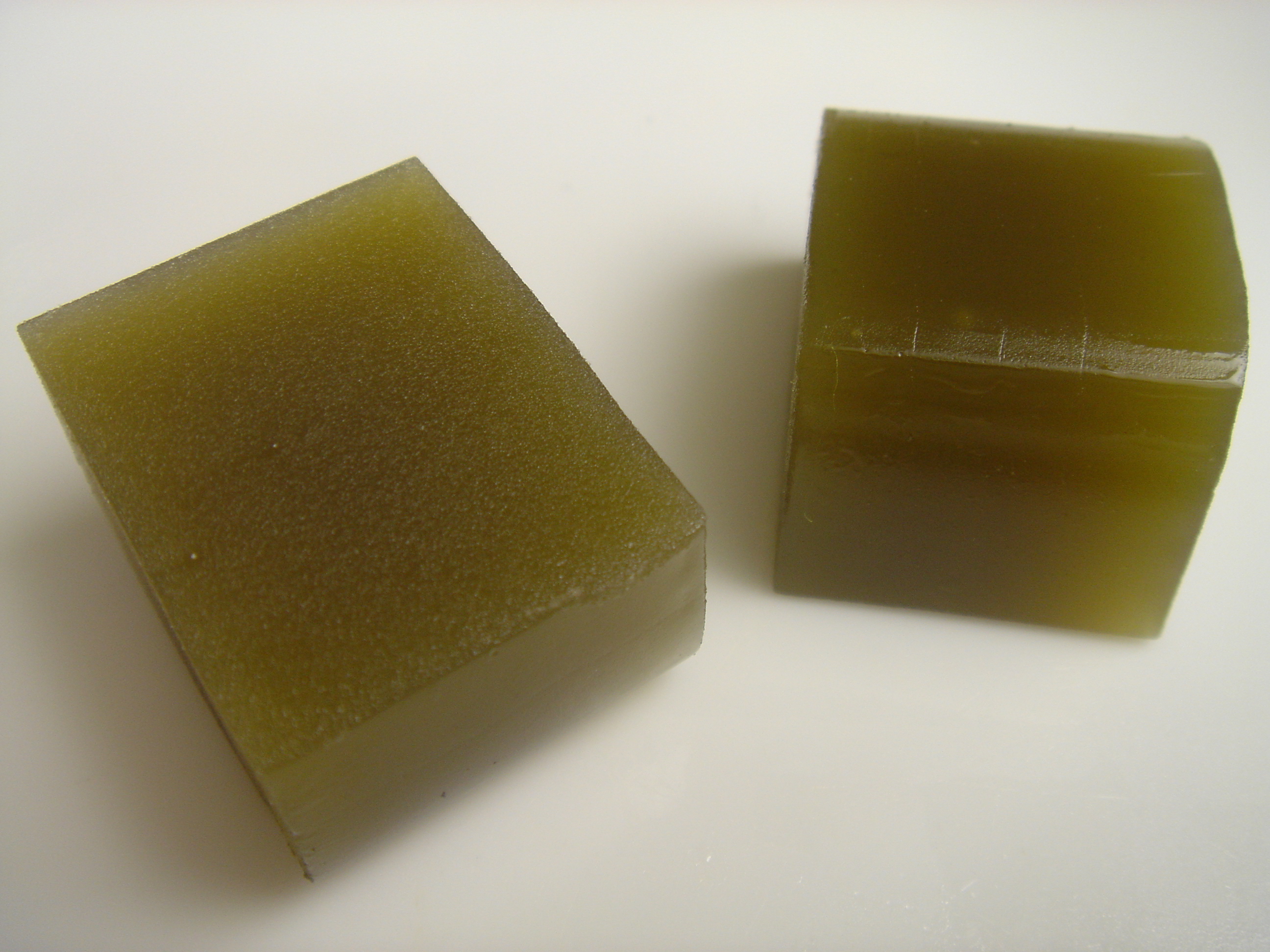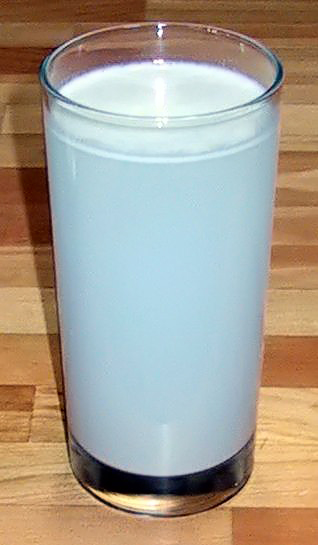|
Electroporation
Electroporation, or electropermeabilization, is a microbiology technique in which an electrical field is applied to cells in order to increase the permeability of the cell membrane, allowing chemicals, drugs, electrode arrays or DNA to be introduced into the cell (also called electrotransfer). In microbiology, the process of electroporation is often used to transform bacteria, yeast, or plant protoplasts by introducing new coding DNA. If bacteria and plasmids are mixed together, the plasmids can be transferred into the bacteria after electroporation, though depending on what is being transferred, cell-penetrating peptides or CellSqueeze could also be used. Electroporation works by passing thousands of volts (~8 kV/cm) across suspended cells in an electroporation cuvette. Afterwards, the cells have to be handled carefully until they have had a chance to divide, producing new cells that contain reproduced plasmids. This process is approximately ten times more effective in increasi ... [...More Info...] [...Related Items...] OR: [Wikipedia] [Google] [Baidu] |
Transformation (genetics)
In molecular biology and genetics, transformation is the genetic alteration of a cell resulting from the direct uptake and incorporation of exogenous genetic material from its surroundings through the cell membrane(s). For transformation to take place, the recipient bacterium must be in a state of competence, which might occur in nature as a time-limited response to environmental conditions such as starvation and cell density, and may also be induced in a laboratory. Transformation is one of three processes that lead to horizontal gene transfer, in which exogenous genetic material passes from one bacterium to another, the other two being conjugation (transfer of genetic material between two bacterial cells in direct contact) and transduction (injection of foreign DNA by a bacteriophage virus into the host bacterium). In transformation, the genetic material passes through the intervening medium, and uptake is completely dependent on the recipient bacterium. As of 2014 about ... [...More Info...] [...Related Items...] OR: [Wikipedia] [Google] [Baidu] |
Tissue Nanotransfection
Tissue nanotransfection (TNT) is an electroporation-based technique capable of gene and drug cargo delivery or transfection at the nanoscale. Furthermore, TNT is a scaffold-less tissue engineering (TE) technique that can be considered cell-only or tissue inducing depending on cellular or tissue level applications. The transfection method makes use of nanochannels to deliver cargo to tissues topically. History Cargo delivery methods rely on carriers, for example nanoparticles, viral vectors, or physical approaches such as gene guns, microinjection, or electroporation The various methods can be limited by size constraints or their ability to efficiently deliver cargo without damaging tissue. Electroporation is a physical method which harnesses an electric field to open pores in the normally semi-permeable cell membrane through which cargo can enter. In this process, the charges can be used to drive cargo in a specific direction. Bulk electroporation (BEP) is the most convention ... [...More Info...] [...Related Items...] OR: [Wikipedia] [Google] [Baidu] |
Microinjection
Microinjection is the use of a glass micropipette to inject a liquid substance at a microscopic or borderline macroscopic level. The target is often a living cell but may also include intercellular space. Microinjection is a simple mechanical process usually involving an inverted microscope with a magnification power of around 200x (though sometimes it is performed using a dissecting stereo microscope at 40–50x or a traditional compound upright microscope at similar power to an inverted model). For processes such as cellular or pronuclear injection the target cell is positioned under the microscope and two micromanipulators—one holding the pipette and one holding a microcapillary needle usually between 0.5 and 5 µm in diameter (larger if injecting stem cells into an embryo)—are used to penetrate the cell membrane and/or the nuclear envelope. In this way the process can be used to introduce a vector into a single cell. Microinjection can also be used in the cl ... [...More Info...] [...Related Items...] OR: [Wikipedia] [Google] [Baidu] |
Electric Arc
An electric arc, or arc discharge, is an electrical breakdown of a gas that produces a prolonged electrical discharge. The electric current, current through a normally Electrical conductance, nonconductive medium such as air produces a plasma (physics), plasma; the plasma may produce visible light. An arc discharge is characterized by a lower voltage than a glow discharge and relies on thermionic emission of electrons from the electrodes supporting the arc. An archaic term is voltaic arc, as used in the phrase "voltaic arc lamp". Techniques for arc suppression can be used to reduce the duration or likelihood of arc formation. In the late 19th century, Arc lamp, electric arc lighting was in wide use for Street light#Arc lamps, public lighting. Some low-pressure electric arcs are used in many applications. For example, fluorescent lamp, fluorescent tubes, mercury, sodium, and metal-halide lamps are used for lighting; xenon arc lamps have been used for movie projectors. Electric a ... [...More Info...] [...Related Items...] OR: [Wikipedia] [Google] [Baidu] |
Agar
Agar ( or ), or agar-agar, is a jelly-like substance consisting of polysaccharides obtained from the cell walls of some species of red algae, primarily from ogonori ('' Gracilaria'') and "tengusa" ('' Gelidiaceae''). As found in nature, agar is a mixture of two components, the linear polysaccharide agarose and a heterogeneous mixture of smaller molecules called agaropectin. It forms the supporting structure in the cell walls of certain species of algae and is released on boiling. These algae are known as agarophytes, belonging to the Rhodophyta (red algae) phylum. The processing of food-grade agar removes the agaropectin, and the commercial product is essentially pure agarose. Agar has been used as an ingredient in desserts throughout Asia and also as a solid substrate to contain culture media for microbiological work. Agar can be used as a laxative; an appetite suppressant; a vegan substitute for gelatin; a thickener for soups; in fruit preserves, ice cream, and ot ... [...More Info...] [...Related Items...] OR: [Wikipedia] [Google] [Baidu] |
Laboratory Centrifuge
A laboratory centrifuge is a piece of laboratory equipment, driven by a motor, which spins liquid samples at high speed. There are various types of centrifuges, depending on the size and the sample capacity.Susan R. Mikkelsen & Eduardo Cortón. Bioanalytical Chemistry, Ch. 13. Centrifugation Methods. John Wiley & Sons, Mar 4, 2004, pp. 247-267. Like all other centrifuges, laboratory centrifuges work by the sedimentation principle, where the centripetal acceleration is used to separate substances of greater and lesser density. Types There are various types of centrifugation: * Differential centrifugation, often used to separate certain organelles from whole cells for further analysis of specific parts of cells * Isopycnic centrifugation, often used to isolate nucleic acids such as DNA * Sucrose gradient centrifugation, often used to purify enveloped viruses and ribosomes, and also to separate cell organelles from crude cellular extracts There are different types of laborato ... [...More Info...] [...Related Items...] OR: [Wikipedia] [Google] [Baidu] |
Liter
The litre (international spelling) or liter (American English spelling) (SI symbols L and l, other symbol used: ℓ) is a metric unit of volume. It is equal to 1 cubic decimetre (dm3), 1000 cubic centimetres (cm3) or 0.001 cubic metre (m3). A cubic decimetre (or litre) occupies a volume of (see figure) and is thus equal to one-thousandth of a cubic metre. The original French metric system used the litre as a base unit. The word ''litre'' is derived from an older French unit, the '' litron'', whose name came from Byzantine Greek—where it was a unit of weight, not volume—via Late Medieval Latin, and which equalled approximately 0.831 litres. The litre was also used in several subsequent versions of the metric system and is accepted for use with the SI,Bureau International des Poids et ... [...More Info...] [...Related Items...] OR: [Wikipedia] [Google] [Baidu] |
Electrode
An electrode is an electrical conductor used to make contact with a nonmetallic part of a circuit (e.g. a semiconductor, an electrolyte, a vacuum or air). Electrodes are essential parts of batteries that can consist of a variety of materials depending on the type of battery. The electrophore, invented by Johan Wilcke, was an early version of an electrode used to study static electricity. Anode and cathode in electrochemical cells Electrodes are an essential part of any battery. The first electrochemical battery made was devised by Alessandro Volta and was aptly named the Voltaic cell. This battery consisted of a stack of copper and zinc electrodes separated by brine-soaked paper disks. Due to fluctuation in the voltage provided by the voltaic cell it wasn't very practical. The first practical battery was invented in 1839 and named the Daniell cell after John Frederic Daniell. Still making use of the zinc–copper electrode combination. Since then many more batteries ... [...More Info...] [...Related Items...] OR: [Wikipedia] [Google] [Baidu] |
Pipette
A pipette (sometimes spelled as pipett) is a laboratory tool commonly used in chemistry, biology and medicine to transport a measured volume of liquid, often as a media dispenser. Pipettes come in several designs for various purposes with differing levels of accuracy and precision, from single piece glass pipettes to more complex adjustable or electronic pipettes. Many pipette types work by creating a partial vacuum above the liquid-holding chamber and selectively releasing this vacuum to draw up and dispense liquid. Measurement accuracy varies greatly depending on the instrument. History The first simple pipettes were made in glass, such as Pasteur pipettes. Large pipettes continue to be made in glass; others are made in squeezable plastic for situations where an exact volume is not required. The first micropipette was patented in 1957 by Dr Heinrich Schnitger (Marburg, Germany). The founder of the company Eppendorf, Dr. Heinrich Netheler, inherited the rights and starte ... [...More Info...] [...Related Items...] OR: [Wikipedia] [Google] [Baidu] |
Suspension (chemistry)
In chemistry, a suspension is a heterogeneous mixture of a fluid that contains solid particles sufficiently large for sedimentation. The particles may be visible to the naked eye, usually must be larger than one micrometer, and will eventually settle, although the mixture is only classified as a suspension when and while the particles have not settled out. Properties A suspension is a heterogeneous mixture in which the solute particles do not dissolve, but get suspended throughout the bulk of the solvent, left floating around freely in the medium. The internal phase (solid) is dispersed throughout the external phase (fluid) through mechanical agitation, with the use of certain excipients or suspending agents. An example of a suspension would be sand in water. The suspended particles are visible under a microscope and will settle over time if left undisturbed. This distinguishes a suspension from a colloid, in which the colloid particles are smaller and do not settle. Collo ... [...More Info...] [...Related Items...] OR: [Wikipedia] [Google] [Baidu] |





